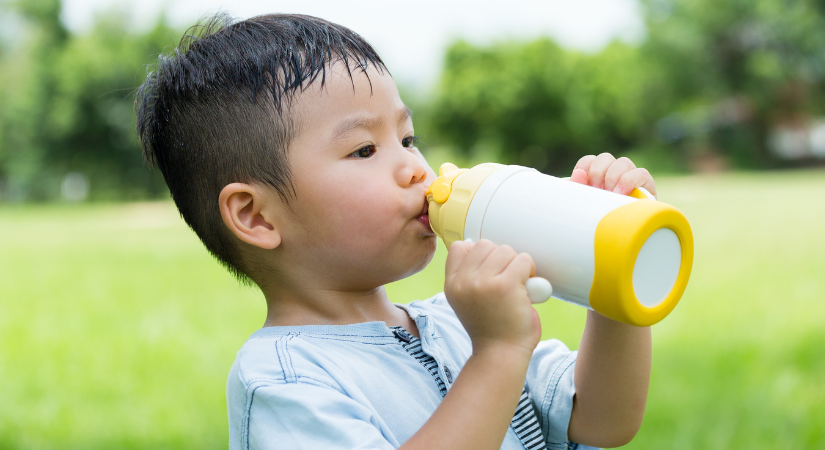When the warmer weather makes an appearance, it’s lovely to get outside and make the most of it with the children. Whether it’s water play in the garden, a nature walk, or a simple storytime under the trees, sunny days bring so many opportunities for fun and learning.
But hot weather also brings challenges, especially when it comes to keeping little ones cool, comfortable, and protected. Babies and young children can’t regulate their body temperature as easily as adults, which means they can overheat quickly. Add in the risks from sun exposure, and it’s clear that a little planning goes a long way.
Here are some simple, practical tips to help you and your team stay sun-safe this summer, both outdoors and indoors.

Implementing Infant Sun Safety Measures Outdoors:
Seek Out Shade
Whenever possible, set up play areas in shaded spots. Use parasols, pop-up tents, or make the most of natural shade under trees. Staying out of the direct sunlight can help avoid the dangers of UV rays and keeps children cooler too.
Time It Right
Try to avoid time outside during the hottest part of the day: between 11am and 3pm. Plan outdoor activities for early morning or later in the afternoon when it’s cooler. Water play, for example, can be a great way to stay cool, but keep a close eye on the temperature and how long children are exposed to the sun.
Safe Use of Prams
If babies are in prams outdoors, make sure they’re shaded and not left in direct sunlight. Avoid covering prams with blankets or cloths as this can trap heat; use proper sunshades or breathable covers instead.
Sun Cream Essentials
It’s important that all children wear sun cream. Many settings ask parents to provide a clearly labelled, in-date sun cream with an appropriate SPF. If you supply sun cream at your setting, make sure you’ve shared the details with parents and have written permission for application.
Practitioners should wear suncream too, keeping themselves safe helps keep the children safe. Not only that but it helps model good sun safety behaviour to the children!
Keeping Cool Indoors
Keep Rooms Comfortable
Use fans (not directly pointed at children to avoid discomfort) or air conditioning if you have it, open windows where safe, and close blinds or curtains to block out direct sun. Keep an eye on room temperature, especially where children sleep. Using a room thermometer can make this easier.
A useful hack if you don’t have air conditioning is to place a bowl of ice or cold water in front of a fan. When the air passes over the bowl it will cool down before being blown around the room. Ice packs can also work for this if you don’t want a bowl of ice or cold water sitting around.
Dress for the Weather
Less is more when it’s hot. For nap time, a lightweight vest or even just a nappy may be enough. Always make sure children are comfortable and not overheating.
Cool-Down Techniques
If a room is especially warm, gently patting children with a cool, damp cloth on their forehead, neck, or wrists can help bring their temperature down.
Hydration and Healthy Snacks
Offer Drinks Often
Encourage regular water breaks, even if children don’t say they’re thirsty. Keeping water accessible throughout the day can help remind children to drink and foster independence in hydration practices.
Cool, Hydrating Foods
Offer snacks like watermelon, cucumber sticks, or oranges. These water-rich foods can help keep little ones hydrated and are often a big hit on warm days.
Watch for Signs of Overheating
It’s important to spot the early signs of overheating so you can act quickly. Keep an eye out for:
- A hot or clammy tummy
- Flushed cheeks
- Heat rash
- Damp hair
- Rapid breathing
If you’re ever unsure or a child’s symptoms persist or worsen, always seek medical advice.
Here’s a useful infographic showing signs of overheating in babies:

Create a Sun Protection Policy
Having a clear sun protection policy in place helps everyone, staff and parents alike, know what to expect and how to keep children safe during hot weather. A good policy will include guidance on outdoor play, sunscreen use, hydration, clothing, and monitoring for signs of overheating.
Our nursery management software, securely stores important documents like sun protection policies, making them easily accessible for both parents and staff. That means less admin time and more confidence that everyone’s on the same page.
Don’t Hesitate to Ask for Help
If you’re ever concerned about a child’s health in the heat, trust your instincts and seek medical support. Heat-related illness can develop quickly, so early action is key.
Knowing what to do during hot weather makes all the difference when it comes to keeping little ones safe and comfortable. We know that extreme heat can feel a bit worrying, but with a few simple steps (like providing plenty of shade, planning outdoor play for cooler times of day, applying sun cream, and keeping indoor spaces cool) you can help protect children from the heat and enjoy the sunshine with confidence.
Learn About How eyworks Can Help
If you would like to learn more about how eyworks can help, contact our support team at hello@eywork.co.uk.
